So how did I get started on the topic of magical landscapes? Today we’ll take a look on my artistic background and what I have in mind for my landscape sketching this year.
Read part one to learn what’s important for me in landscape painting, how I think about landscapes, and how they connect to local legends for me.
Here’s a video version of this post (with more pictures): Folk tale landscapes – the story so far (#2) video
I actually have spent a lot of time thinking about and depicting landscapes. I originally started a project over ten years ago where I began collecting interesting landscapes in the area I grew up in – a small mountain town completely surrounded by forest where people celebrate Walpurgis night each year. You know from part one of this that I’m very interested in local legends and folk tales. And we had a lot of them in the Harz mountains: local stories where witches, white ladies (female ghosts that and mountain ghosts played a role. Also a lot of tales about miners and mining ghosts and foreigners who mysteriously appear and find silver in secret places. Ore mining was really important in our area from the 15th century on, and it brought the spruces to our forests, since the wood was good for building things. For me it wasn’t so much about the content of these stories, but rather the landscapes they took place in. Very rarely were there any the exact spots or places where the story supposedly took place, but I went out with the atmosphere of the stories in my mind, and I tried to find a background for it, if you will. And dark spruce forests are perfect as a backdrop.
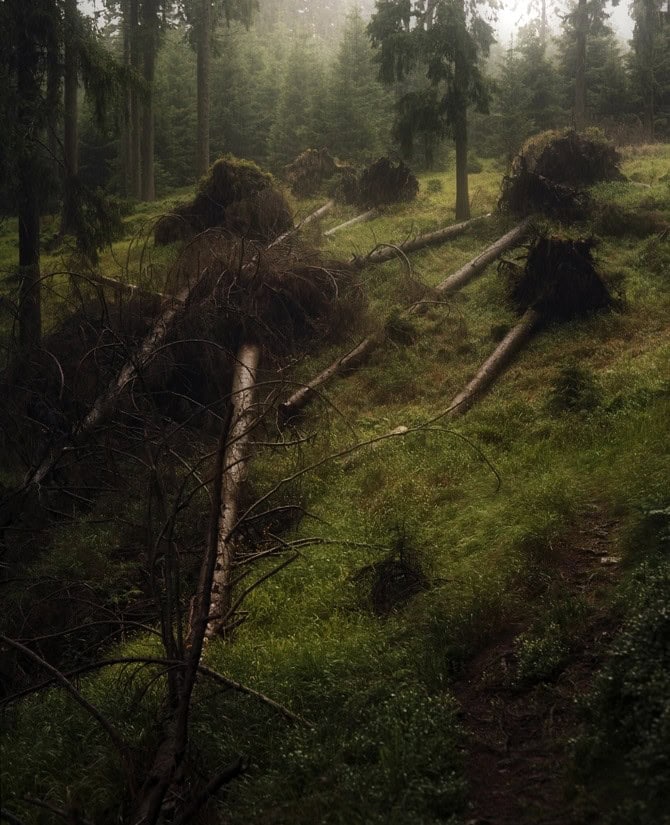
Back then I was using photography as a medium – I actually majored in photography in art school. I set out to make a series about the special places I found. I shot everything on film, always carrying big clunky medium format cameras, light meter, a bunch of film rolls and a tripod through the forest. Medium format gives you a wonderful amount of detail with a very fine grain, so the photos could be enlarged up to beautiful big prints. It was always worth it carrying the extra weight, although I cursed many times when I lost a lens cap and had to go back several kilometers. But sometimes that gave me a fresh look on landscapes I had already gone past.

I worked on this series for quite a few years, went through an insane amount of film, hiked through a lot of eerie landscapes with my camera, and eventually made a large book from my photos. I still like to look through it from time to time and I still like the images a lot. Throughout this post, you can see a small selection of the pictures I took back then. I’ve never really decided that the project is finished and I already had plans to continue with a second series of images.
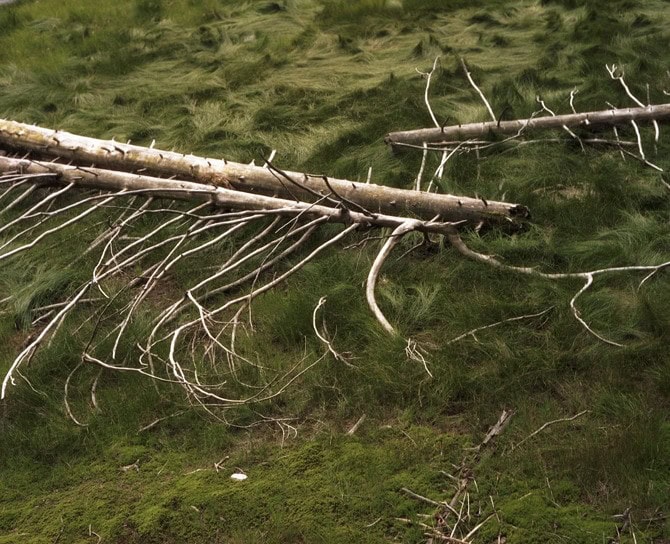
But somehow, over the years, I had less and less time, analogue photography became even more expensive (not to speak about travel costs), and my equipment seemed to be heavier each time I looked at it. After I had rediscovered sketching as a medium I never brought anything bigger than a compact camera to my hikes – not very satisfying from a photographer’s view, but good to take snapshot notes that you can paint from later. I still know what kind of picture I want to take, and if the camera isn’t up to it, then I have to paint it myself. I still love photography very much, but I’m interested to see if I can create pictures with a similar vibe with illustration techniques.
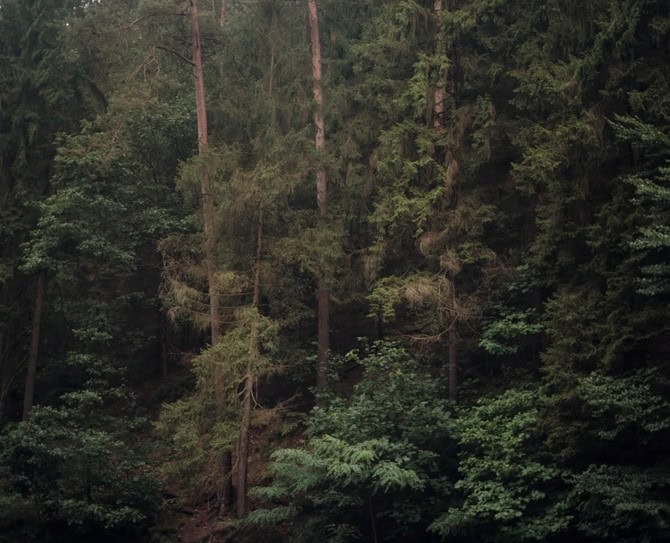
So this time around I’m approaching the subject with pencils and brushes, only that it feels more like an expedition to new places than a journey into the familiar names that I’ve known forever. I’m exploring new landscapes, I’m hunting new ghosts. What I’d like to do with this is I’d like to make a series of illustrations about these places, and bring them together somehow – I’m not quite sure how yet, maybe as an explorer’s notebook with field notes. Since I’ve taken up nature sketching I really like how you can combine illustrations and text. My last book didn’t use a lot of words because I didn’t feel they were needed. But this time I could imagine adding notes.
And to be honest, this project is really hard for me, because my landscape painting skills often aren’t refined enough for me to express what I mean, and the results are often very different from what I used to pursue with my photography. I guess you could say that I’m really bad at painting. At least for the thing I’m trying to do.
With photography you have the wonderful ability to render tiniest details (especially on film) without having to spend hours with a brush, and have huge areas of soft focus or blur in the same frame. It was a very intuitive approach for me, and one that I had practiced and refined over years – seeing a potential subject, circling it, choosing a composition, exposing it on film, scanning and editing it later to see if it works as a shot. While it was a completely different way of working I have to say that I worked on my photos quite a bit in a way that I would describe as “painting in the photo”, simulating dark room effects with digital tools to get the visual effect that I wanted.
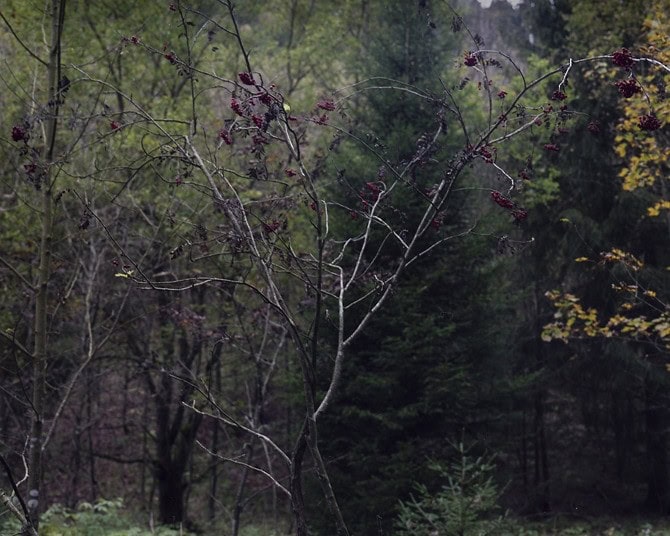
With watercolor, it’s all happening directly on the paper and that’s a whole different story. And it takes time and patience. Painting more complex scenes is a real technical challenge for me until I get the result that I want. That’s why I find it’s important to do a lot of preliminary sketches and studies. And very often I capitulate to my impatience before I have achieved the image that I want, and then I dream of going back to photography. Painting landscapes is so hard for me. I often feel so clueless and incompetent when I paint, and like giving up is the better alternative. I have no idea why I keep returning to it, yet I do. By the way, this also happened during my photo hikes. So not a new feeling exactly.
But I keep painting, and I’m learning a ton about it through this project. Even if I should go back to film and photos at some point (It is unlikely at this point, although I would love it more than I want to admit), I notice how, through being occupied with landscapes and old tales, new stories start to appear in my mind, and I’m already thinking about what stories could be hidden in all of this that I can tell. At the intersection between nature and art and history, what stories do these landscapes tell? I like the possibilities that illustration gives me since it’s such an adaptible and flexible medium. This time around, I’d like to include more depictions of buildings and man-made structures into the series – when I’m painting I can change how they look and give them a more vintage feel. And I really like the thought of combining illustrations and field sketches with a travelogue or with field notes – similar to the records the explorers of the 19th century kept on their journeys. Only that my expedition is one into landscapes that only reveal their story if you have a certain way to look at them.
For now, I’ve already found and sketched a few landscapes where strange tales could take place at. In this year, I’d like to explore the storytelling aspect behind these places more, and maybe create bigger illustrations from my small sketches. I’ve already filmed a few of my painting sessions, and plan to document more of the development of the series on video. I hope that my schedule will allow me to work intensely on this. And I hope you’ll be along for the journey!
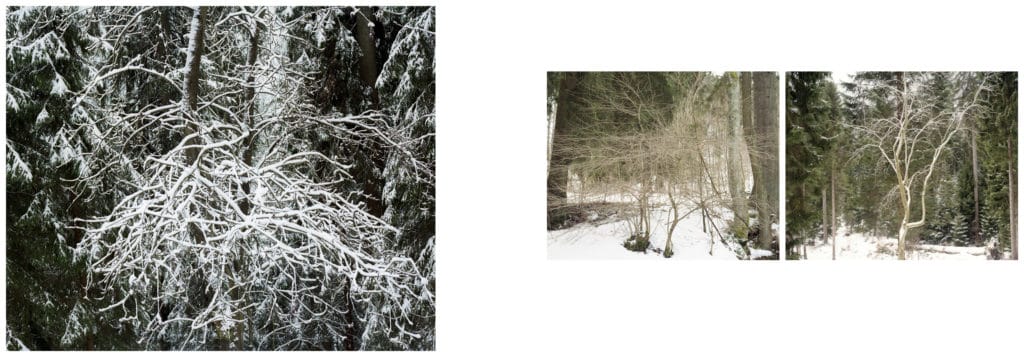


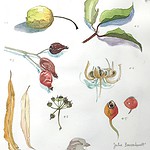
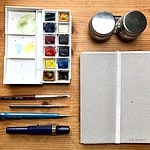
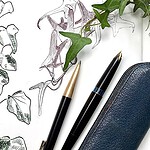
Julia,
I want to thank you for your work. I came across your YouTube videos on quitting social media. You have inspired me to quit social media as well.I am still getting use to the idea and I find that I am still going through withdrawals.
Equally important I enjoy your folktale artistry.
I am from Reno Nevada at the base of the Sierra mountains. I too love landscapes and also the local wild life. I work in textile , fabrics and thread. And I am only about 5 years into my art journey.
I look forward to your blog. Thank you
Holly
Thank you Holly, I really appreciate it! It’s best to give yourself good alternatives so that you have something to do instead of browsing social media. That’s how it worked best for me. 🙂
Hi Julia,
this idea of magical landscapes is a very exciting new approach to painting – I am curious to see how you tackle it! Have you thought about combining the legends with your paintings? Or working together with an author? There are so many new possibilities! I can understand the feelings of not being competent, but thinking of all the beautiful sketches and paintings you have shown on your blog I am sure you will be successful. I am looking forward to reading more about it on your blog.
Best wishes
Christine
Hi Christine,
thank you so much for believing into my skills, I appreciate it very much! 🙂
About adding text – I want to bring the atmosphere of the stories into my landscapes, so for me it’s not about having a direct connection between text and image. The stories can stand for themselves as research material, and the landscapes should transport the mood. At least that’s how I think about it for now. 🙂
I love the concept of the magical landscape, and look forward to the next stop on the journey. The photographs are beautiful. I have a few special spots in my own local hiking places that seem magical somehow, and I tend to visit them often, even if just in a meditative moment in my mind. I am now inspired to somehow try to capture them in my sketchbook.
Thank you,
– Aimee
Thank you Aimee, I really appreciate it! Interesting that you feel the same way about some landscapes. Definitely give painting them a try!
Hi, Julia,
I just want to say, Thank You. I found you on a rabbit hole dive into folk art and watercolor and have taken 2 Skillshare classes that you taught. I appreciate your Voice and your willingness to say that you don’t feel confident about your work all the time. I’m 50, a late blooming artist, and an even later blooming watercolor painter (you also inspired me to try gouache, and I love it!). I could go on and on, really, but I’ll leave it with thank you for sharing yourself and your process. I look forward to watching this project evolve.
Best wishes,
Fálki
Thank you Falki for stopping by and welcome to my blog! I believe it’s important to be open about the artistic process, even if it means that new things don’t always work out as intended. I think it’s great that you’re so curious and that you love gouache, too! It’s been a while since I created folk art paintings, it’s always a very calming activity! Hope you enjoy the blog and thank you for being here and saying hello. 🙂
Your photos are so beautiful. I can feel the mysteries of a story brewing in the lights and shadows and interesting forms of the trees, the leaves and the forest scenes. Thank you for sharing your talent and your thought process. It is both interesting and inspirational.